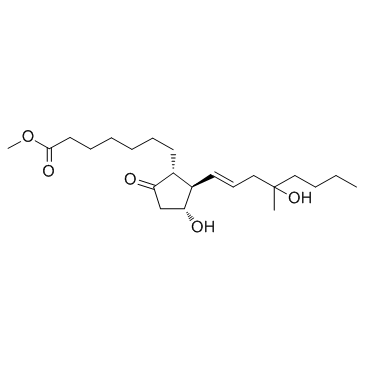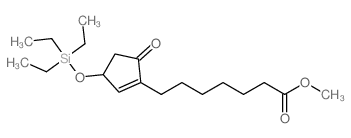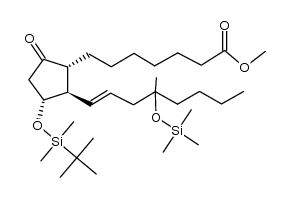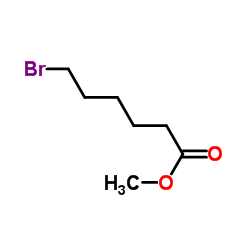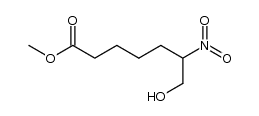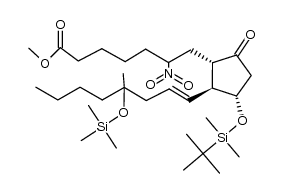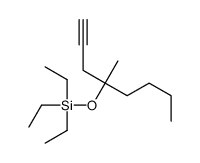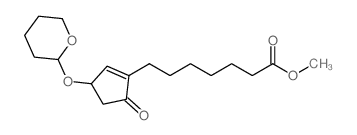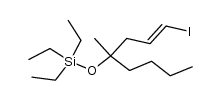CHEMICAL IDENTIFICATION
-
RTECS NUMBER :
-
UK8390000
-
CHEMICAL NAME :
-
Prost-13-en-1-oic acid, 11,16-dihydroxy-16-methyl-9-oxo-, methyl ester, (11-alpha,13E)-(+-)-
-
CAS REGISTRY NUMBER :
-
59122-46-2
-
LAST UPDATED :
-
199709
-
DATA ITEMS CITED :
-
20
-
MOLECULAR FORMULA :
-
C22-H38-O5
-
MOLECULAR WEIGHT :
-
382.60
HEALTH HAZARD DATA
ACUTE TOXICITY DATA
-
TYPE OF TEST :
-
LD50 - Lethal dose, 50 percent kill
-
ROUTE OF EXPOSURE :
-
Oral
-
SPECIES OBSERVED :
-
Rodent - rat
-
DOSE/DURATION :
-
81 mg/kg
-
TOXIC EFFECTS :
-
Behavioral - somnolence (general depressed activity) Lungs, Thorax, or Respiration - cyanosis Gastrointestinal - hypermotility, diarrhea
-
REFERENCE :
-
JZKEDZ Jitchuken Zenrinsho Kenkyuho. Central Institute for Experimental Animals, Research Reports. (Jikken Dobutsu Chuo Kenkyusho, 1433 Nogawa, Takatsu-ku, Kawasaki 211, Japan) V.1- 1975- Volume(issue)/page/year: 11,33,1985
-
TYPE OF TEST :
-
LD50 - Lethal dose, 50 percent kill
-
ROUTE OF EXPOSURE :
-
Intraperitoneal
-
SPECIES OBSERVED :
-
Rodent - rat
-
DOSE/DURATION :
-
40 mg/kg
-
TOXIC EFFECTS :
-
Behavioral - changes in motor activity (specific assay) Gastrointestinal - hypermotility, diarrhea
-
REFERENCE :
-
DDSCDJ Digestive Diseases and Sciences. (Plenum Pub. Corp., 233 Spring St., New York, NY 10013) V.24- 1979- Volume(issue)/page/year: 30,142S,1985
-
TYPE OF TEST :
-
LD50 - Lethal dose, 50 percent kill
-
ROUTE OF EXPOSURE :
-
Intramuscular
-
SPECIES OBSERVED :
-
Rodent - rat
-
DOSE/DURATION :
-
19 mg/kg
-
TOXIC EFFECTS :
-
Behavioral - somnolence (general depressed activity) Lungs, Thorax, or Respiration - cyanosis Gastrointestinal - hypermotility, diarrhea
-
REFERENCE :
-
JZKEDZ Jitchuken Zenrinsho Kenkyuho. Central Institute for Experimental Animals, Research Reports. (Jikken Dobutsu Chuo Kenkyusho, 1433 Nogawa, Takatsu-ku, Kawasaki 211, Japan) V.1- 1975- Volume(issue)/page/year: 11,33,1985
-
TYPE OF TEST :
-
LD50 - Lethal dose, 50 percent kill
-
ROUTE OF EXPOSURE :
-
Oral
-
SPECIES OBSERVED :
-
Rodent - mouse
-
DOSE/DURATION :
-
27 mg/kg
-
TOXIC EFFECTS :
-
Behavioral - changes in motor activity (specific assay) Gastrointestinal - hypermotility, diarrhea
-
REFERENCE :
-
DDSCDJ Digestive Diseases and Sciences. (Plenum Pub. Corp., 233 Spring St., New York, NY 10013) V.24- 1979- Volume(issue)/page/year: 30,142S,1985
-
TYPE OF TEST :
-
LD50 - Lethal dose, 50 percent kill
-
ROUTE OF EXPOSURE :
-
Intraperitoneal
-
SPECIES OBSERVED :
-
Rodent - mouse
-
DOSE/DURATION :
-
70 mg/kg
-
TOXIC EFFECTS :
-
Behavioral - changes in motor activity (specific assay) Gastrointestinal - hypermotility, diarrhea
-
REFERENCE :
-
DDSCDJ Digestive Diseases and Sciences. (Plenum Pub. Corp., 233 Spring St., New York, NY 10013) V.24- 1979- Volume(issue)/page/year: 30,142S,1985
-
TYPE OF TEST :
-
LD50 - Lethal dose, 50 percent kill
-
ROUTE OF EXPOSURE :
-
Intramuscular
-
SPECIES OBSERVED :
-
Rodent - mouse
-
DOSE/DURATION :
-
16 mg/kg
-
TOXIC EFFECTS :
-
Behavioral - somnolence (general depressed activity) Lungs, Thorax, or Respiration - cyanosis Gastrointestinal - hypermotility, diarrhea
-
REFERENCE :
-
JZKEDZ Jitchuken Zenrinsho Kenkyuho. Central Institute for Experimental Animals, Research Reports. (Jikken Dobutsu Chuo Kenkyusho, 1433 Nogawa, Takatsu-ku, Kawasaki 211, Japan) V.1- 1975- Volume(issue)/page/year: 11,33,1985 ** OTHER MULTIPLE DOSE TOXICITY DATA **
-
TYPE OF TEST :
-
TDLo - Lowest published toxic dose
-
ROUTE OF EXPOSURE :
-
Oral
-
SPECIES OBSERVED :
-
Rodent - rat
-
DOSE/DURATION :
-
3285 mg/kg/1Y-I
-
TOXIC EFFECTS :
-
Gastrointestinal - hypermotility, diarrhea Blood - changes in serum composition (e.g. TP, bilirubin, cholesterol) Nutritional and Gross Metabolic - changes in iron
-
REFERENCE :
-
DDSCDJ Digestive Diseases and Sciences. (Plenum Pub. Corp., 233 Spring St., New York, NY 10013) V.24- 1979- Volume(issue)/page/year: 30,142S,1985
-
TYPE OF TEST :
-
TDLo - Lowest published toxic dose
-
ROUTE OF EXPOSURE :
-
Oral
-
SPECIES OBSERVED :
-
Rodent - rat
-
DOSE/DURATION :
-
56 mg/kg/5W-I
-
TOXIC EFFECTS :
-
Endocrine - changes in pituitary weight Blood - changes in serum composition (e.g. TP, bilirubin, cholesterol) Biochemical - Enzyme inhibition, induction, or change in blood or tissue levels - true cholinesterase
-
REFERENCE :
-
JZKEDZ Jitchuken Zenrinsho Kenkyuho. Central Institute for Experimental Animals, Research Reports. (Jikken Dobutsu Chuo Kenkyusho, 1433 Nogawa, Takatsu-ku, Kawasaki 211, Japan) V.1- 1975- Volume(issue)/page/year: 11,39,1985
-
TYPE OF TEST :
-
TDLo - Lowest published toxic dose
-
ROUTE OF EXPOSURE :
-
Oral
-
SPECIES OBSERVED :
-
Rodent - rat
-
DOSE/DURATION :
-
140 mg/kg/28D-I
-
TOXIC EFFECTS :
-
Gastrointestinal - nausea or vomiting Blood - changes in erythrocyte (RBC) count Blood - changes in leukocyte (WBC) count
-
REFERENCE :
-
JZKEDZ Jitchuken Zenrinsho Kenkyuho. Central Institute for Experimental Animals, Research Reports. (Jikken Dobutsu Chuo Kenkyusho, 1433 Nogawa, Takatsu-ku, Kawasaki 211, Japan) V.1- 1975- Volume(issue)/page/year: 11,157,1985
-
TYPE OF TEST :
-
TDLo - Lowest published toxic dose
-
ROUTE OF EXPOSURE :
-
Oral
-
SPECIES OBSERVED :
-
Mammal - dog
-
DOSE/DURATION :
-
109 ug/kg/1Y-I
-
TOXIC EFFECTS :
-
Gastrointestinal - hypermotility, diarrhea Nutritional and Gross Metabolic - body temperature increase Related to Chronic Data - death
-
REFERENCE :
-
DDSCDJ Digestive Diseases and Sciences. (Plenum Pub. Corp., 233 Spring St., New York, NY 10013) V.24- 1979- Volume(issue)/page/year: 30,142S,1985
-
TYPE OF TEST :
-
TDLo - Lowest published toxic dose
-
ROUTE OF EXPOSURE :
-
Oral
-
SPECIES OBSERVED :
-
Rodent - rabbit
-
DOSE/DURATION :
-
140 mg/kg/2W-I
-
TOXIC EFFECTS :
-
Gastrointestinal - ulceration or bleeding from stomach Nutritional and Gross Metabolic - weight loss or decreased weight gain Related to Chronic Data - death
-
REFERENCE :
-
JZKEDZ Jitchuken Zenrinsho Kenkyuho. Central Institute for Experimental Animals, Research Reports. (Jikken Dobutsu Chuo Kenkyusho, 1433 Nogawa, Takatsu-ku, Kawasaki 211, Japan) V.1- 1975- Volume(issue)/page/year: 11,229,1985 ** REPRODUCTIVE DATA **
-
TYPE OF TEST :
-
TDLo - Lowest published toxic dose
-
ROUTE OF EXPOSURE :
-
Oral
-
DOSE :
-
12 ug/kg
-
SEX/DURATION :
-
female 5-8 week(s) after conception
-
TOXIC EFFECTS :
-
Reproductive - Specific Developmental Abnormalities - Central Nervous System Reproductive - Specific Developmental Abnormalities - craniofacial (including nose and tongue) Reproductive - Specific Developmental Abnormalities - other developmental abnormalities
-
REFERENCE :
-
AJMGDA American Journal of Medical Genetics. (John Wiley & Sons Ltd., 605 Third Ave., New York, NY 10158) V.1- 1977- Volume(issue)/page/year: 47,59,1993
-
TYPE OF TEST :
-
TDLo - Lowest published toxic dose
-
ROUTE OF EXPOSURE :
-
Multiple routes
-
DOSE :
-
16 ug/kg
-
SEX/DURATION :
-
female 5-8 week(s) after conception
-
TOXIC EFFECTS :
-
Reproductive - Specific Developmental Abnormalities - Central Nervous System Reproductive - Specific Developmental Abnormalities - craniofacial (including nose and tongue) Reproductive - Specific Developmental Abnormalities - body wall
-
REFERENCE :
-
AJMGDA American Journal of Medical Genetics. (John Wiley & Sons Ltd., 605 Third Ave., New York, NY 10158) V.1- 1977- Volume(issue)/page/year: 47,59,1993
-
TYPE OF TEST :
-
TDLo - Lowest published toxic dose
-
ROUTE OF EXPOSURE :
-
Oral
-
DOSE :
-
16 gm/kg
-
SEX/DURATION :
-
male 10 week(s) pre-mating female 3 week(s) pre-mating - 7 day(s) after conception
-
TOXIC EFFECTS :
-
Reproductive - Fertility - pre-implantation mortality (e.g. reduction in number of implants per female; total number of implants per corpora lutea) Reproductive - Fertility - litter size (e.g. # fetuses per litter; measured before birth)
-
REFERENCE :
-
JZKEDZ Jitchuken Zenrinsho Kenkyuho. Central Institute for Experimental Animals, Research Reports. (Jikken Dobutsu Chuo Kenkyusho, 1433 Nogawa, Takatsu-ku, Kawasaki 211, Japan) V.1- 1975- Volume(issue)/page/year: 11,167,1985
-
TYPE OF TEST :
-
TDLo - Lowest published toxic dose
-
ROUTE OF EXPOSURE :
-
Oral
-
DOSE :
-
320 mg/kg
-
SEX/DURATION :
-
female 17-22 day(s) after conception lactating female 26 day(s) post-birth
-
TOXIC EFFECTS :
-
Reproductive - Effects on Newborn - growth statistics (e.g.%, reduced weight gain)
-
REFERENCE :
-
JZKEDZ Jitchuken Zenrinsho Kenkyuho. Central Institute for Experimental Animals, Research Reports. (Jikken Dobutsu Chuo Kenkyusho, 1433 Nogawa, Takatsu-ku, Kawasaki 211, Japan) V.1- 1975- Volume(issue)/page/year: 11,213,1985
-
TYPE OF TEST :
-
TDLo - Lowest published toxic dose
-
ROUTE OF EXPOSURE :
-
Oral
-
DOSE :
-
440 mg/kg
-
SEX/DURATION :
-
female 7-17 day(s) after conception
-
TOXIC EFFECTS :
-
Reproductive - Effects on Newborn - growth statistics (e.g.%, reduced weight gain)
-
REFERENCE :
-
JZKEDZ Jitchuken Zenrinsho Kenkyuho. Central Institute for Experimental Animals, Research Reports. (Jikken Dobutsu Chuo Kenkyusho, 1433 Nogawa, Takatsu-ku, Kawasaki 211, Japan) V.1- 1975- Volume(issue)/page/year: 11,189,1985
-
TYPE OF TEST :
-
TDLo - Lowest published toxic dose
-
ROUTE OF EXPOSURE :
-
Oral
-
DOSE :
-
15 mg/kg
-
SEX/DURATION :
-
female 7-9 day(s) after conception
-
TOXIC EFFECTS :
-
Reproductive - Fertility - female fertility index (e.g. # females pregnant per # sperm positive females; # females pregnant per # females mated)
-
REFERENCE :
-
SCYYDZ Shengzhi Yu Biyun. Reproduction and Contraception. (China International Book Trading Corp., POB 2820, Beijing, Peop. Rep. China) 1980- Volume(issue)/page/year: 15,47,1995
-
TYPE OF TEST :
-
TDLo - Lowest published toxic dose
-
ROUTE OF EXPOSURE :
-
Subcutaneous
-
DOSE :
-
3 mg/kg
-
SEX/DURATION :
-
female 7-9 day(s) after conception
-
TOXIC EFFECTS :
-
Reproductive - Fertility - female fertility index (e.g. # females pregnant per # sperm positive females; # females pregnant per # females mated)
-
REFERENCE :
-
SCYYDZ Shengzhi Yu Biyun. Reproduction and Contraception. (China International Book Trading Corp., POB 2820, Beijing, Peop. Rep. China) 1980- Volume(issue)/page/year: 15,47,1995
-
TYPE OF TEST :
-
TDLo - Lowest published toxic dose
-
ROUTE OF EXPOSURE :
-
Oral
-
DOSE :
-
1320 mg/kg
-
SEX/DURATION :
-
female 6-18 day(s) after conception
-
TOXIC EFFECTS :
-
Reproductive - Effects on Embryo or Fetus - fetal death Reproductive - Specific Developmental Abnormalities - musculoskeletal system
-
REFERENCE :
-
JZKEDZ Jitchuken Zenrinsho Kenkyuho. Central Institute for Experimental Animals, Research Reports. (Jikken Dobutsu Chuo Kenkyusho, 1433 Nogawa, Takatsu-ku, Kawasaki 211, Japan) V.1- 1975- Volume(issue)/page/year: 11,237,1985
-
TYPE OF TEST :
-
TDLo - Lowest published toxic dose
-
ROUTE OF EXPOSURE :
-
Oral
-
DOSE :
-
4 mg/kg
-
SEX/DURATION :
-
female 11-12 day(s) after conception
-
TOXIC EFFECTS :
-
Reproductive - Maternal Effects - uterus, cervix, vagina
-
REFERENCE :
-
SCYYDZ Shengzhi Yu Biyun. Reproduction and Contraception. (China International Book Trading Corp., POB 2820, Beijing, Peop. Rep. China) 1980- Volume(issue)/page/year: 15,47,1995
|


